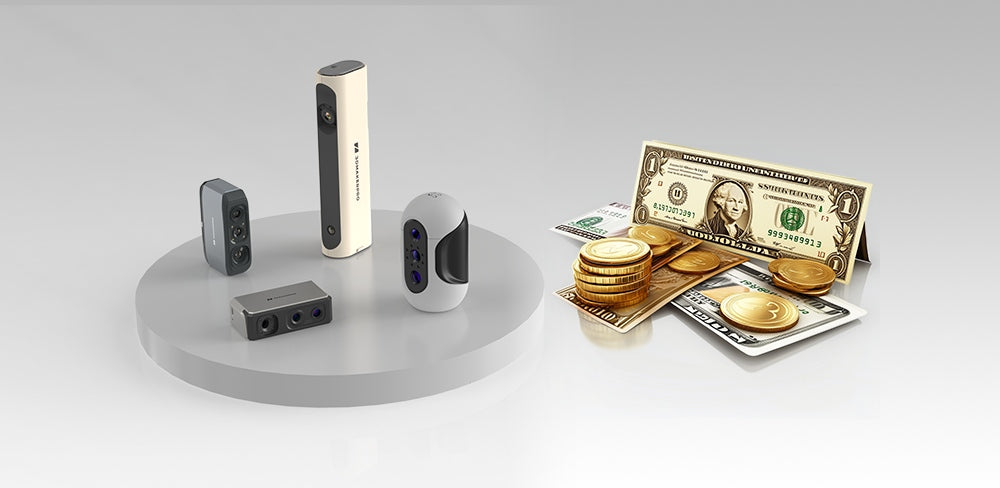3D models could be found anywhere. From figure models to dental molds, from small toys to car models, from spare parts to buildings, all can be created using 3D modeling. 3D modeling is closely related to our lives. You may wonder How can we realize it? And Is it difficult for us? In this passage, we will introduce two main kinds of 3D modeling ways, and teach you to create 3D models step by step.
Step 1 Find A 3D Model File
3D Modeling is the fundamental step. There are three approaches to achieve this. You can choose the method that best meets your needs and convenience.
Plan A: Download from Open Source Platforms
You can find many 3D model files on open-source sharing platforms such as Thingiverse, Cults3D, Sketchfab, Free3D, TurboSquid, and Thangs. Many models are available for free, and users are generally helpful. For example, on Thingiverse, users often upload numerous images of their models and share their printing experiences. You might even find ready-to-follow guidelines. As the saying goes, “Forefathers planted trees for future generations to enjoy the shade.”

Plan B: Create Your Own Using 3D Modeling Software
If you want to create a custom model that doesn't exist yet, you can use 3D modeling software to manipulate edges, vertices, and polygons to develop a mathematical representation of the object's surface. This method allows designers to enhance accuracy and make cost-effective modifications and tests. 3D modeling software is used across various fields, including Gaming, Entertainment, Architecture, Manufacturing, Publishing, Geology, Science and Medical Industry. However, it can be challenging for beginners, as it is often geared toward experienced users. Recommend software includes Maya, 3ds Max, ZBrush, Free CAD, 3DCoat, Blender, Fusion 360, Cinema 4D, etc.

Plan C: Utilize 3D Scanning
For a more straightforward approach, consider using 3D scanning. This method employs blue light technology to capture an object's surface shape, size, and texture contactlessly, generating a digital model on your computer or phone. Simply hold the scanner and capture all angles of the object; a digital 3D model will show on the scanning software. 3D scanning is a time-efficient and user-friendly option, particularly for beginners.
However, it is limited to scanning existing models with only minor adjustments possible afterward. This technique is applicable in various fields, including Entertainment, Architecture, Cultural Relics Restoration, Manufacturing, Publishing, Heritage Protection, Forensic Investigation, and Health Care. Recommend Moose 3D scanner, Lynx 3D scanner, Seal 3D scanner, Mole 3D scanner and JM Studio scanning software.
Once you complete the scanning process, be sure to save your work in common file formats such as OBJ, FBX, STL, AMF, IGES, and others.
Step 2 Export A Slicing File
After completing the 3D modeling process, it's time to move on to slicing. There are many slicing software options available, both free and paid. Some are open-source, while others come bundled with 3D printers. In this step, you'll need to configure the printer settings, such as printing speed, heated bed temperature, layer thickness, and support structures, to ensure optimal printing results. Many 3D printers have recommended parameters, so following their suggestions can simplify the process.
Once you've finished your configurations, export your model file in the .gcode format. Recommended slicing software includes UltiMaker Cura, Bambu Studio, Creality Slicer, Simplify3D, Slic3r, PrusaSlicer, OctoPrint, AstroPrint, Tinkercad, and Craftware.

Step 3 Start Printing
The most crucial step in bringing your design to life is 3D printing. Transfer your G-code file to your 3D printer via USB or LAN transmission. There are several types of 3D printers, including Stereolithography (SLA), Selective Laser Sintering (SLS), Fused Deposition Modeling (FDM), Digital Light Processing (DLP), Liquid Crystal Display (LCD), Multi Jet Fusion (MJF), Direct Metal Laser Sintering (DMLS), and Electron Beam Melting (EBM). For this example, we’ll focus on the beginner-friendly FDM printer.
Before sending your slicing file to the printer, ensure that the printing platform is level. Key factors to check include the Z-axis distance, heated bed temperature, and printing speed. You may need to adjust these settings multiple times for the best results. Fortunately, some printers offer a first-layer test to help identify any configuration issues. If problems arise, address them and restart the process. Once you hit the print button, all you need to do is wait. You can also install a camera to monitor your project as it prints, which may take several hours or even a couple of days, depending on the size of your model. Recommended 3D printers include the Creality Ender-3 V3 SE, Creality K1 Max, Bambu X1, Anycubic Photon Mono X2, and BIQU Hurakan 3D Printer, etc.
Step 4 Post-Processing
Once your print is complete, carefully remove any excess supports or material added during slicing. Next, wash or cure your model to enhance its stability. For precise modifications, you can use a carving knife. After that, polish the surface to ensure better adhesion for painting.
Choose your favorite paint—available in both liquid and spray forms—pick up your brush, and start creating! Remember, practice makes perfect, so feel free to experiment and refine your artwork. Congratulations on successfully bringing your 3D model to life!

Review and summary
Creating a 3D model isn't as difficult as it may seem; interest is the best teacher. 3D scanners are invaluable companions in the 3D printing process. For more detailed tips on creating 3D models, be sure to follow our blog. Let’s advance together with 3DMakerPro by your side on this creative journey.
We sincerely welcome feedback from our supporters on this passage or our products. Please feel free to suggest interesting discussion topics or share your insights about the 3D industry. Take a moment to connect, and we can all benefit from the exchange!

















